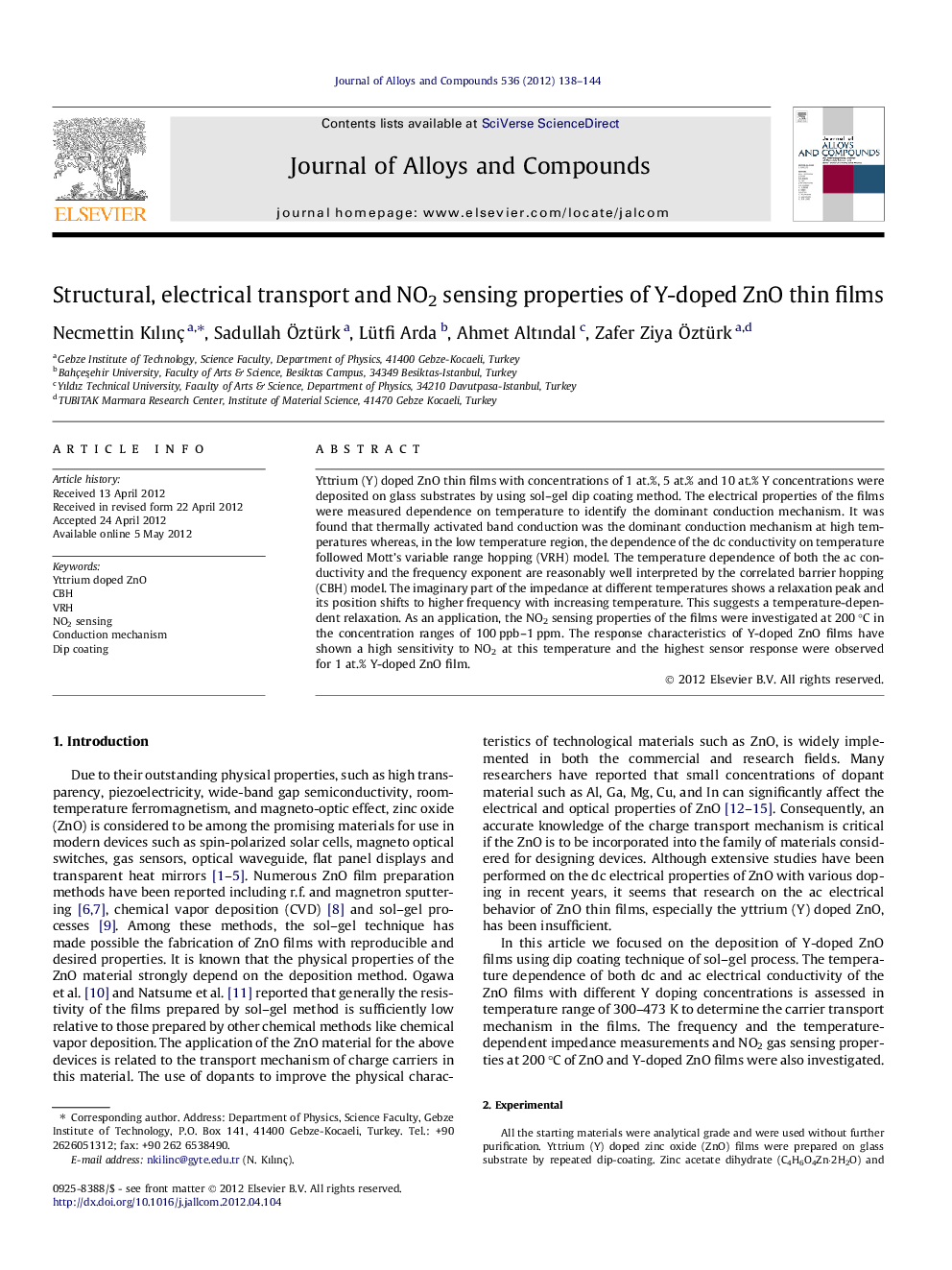| Article ID | Journal | Published Year | Pages | File Type |
|---|---|---|---|---|
| 1615782 | Journal of Alloys and Compounds | 2012 | 7 Pages |
Yttrium (Y) doped ZnO thin films with concentrations of 1 at.%, 5 at.% and 10 at.% Y concentrations were deposited on glass substrates by using sol–gel dip coating method. The electrical properties of the films were measured dependence on temperature to identify the dominant conduction mechanism. It was found that thermally activated band conduction was the dominant conduction mechanism at high temperatures whereas, in the low temperature region, the dependence of the dc conductivity on temperature followed Mott’s variable range hopping (VRH) model. The temperature dependence of both the ac conductivity and the frequency exponent are reasonably well interpreted by the correlated barrier hopping (CBH) model. The imaginary part of the impedance at different temperatures shows a relaxation peak and its position shifts to higher frequency with increasing temperature. This suggests a temperature-dependent relaxation. As an application, the NO2 sensing properties of the films were investigated at 200 °C in the concentration ranges of 100 ppb–1 ppm. The response characteristics of Y-doped ZnO films have shown a high sensitivity to NO2 at this temperature and the highest sensor response were observed for 1 at.% Y-doped ZnO film.
► 1, 5 and 10 at.% Y-doped and undoped ZnO films were prepared by sol–gel dip coating. ► Dc conduction mechanism of Y doped ZnO is VRH at low temperatures. ► At high temperature, thermally activated type conduction mechanism is dominant. ► In addition, ac conduction mechanism of Y doped ZnO can be explained with CBH model. ► The sensor response of ZnO to NO2 gas is enhanced with Y doping.
